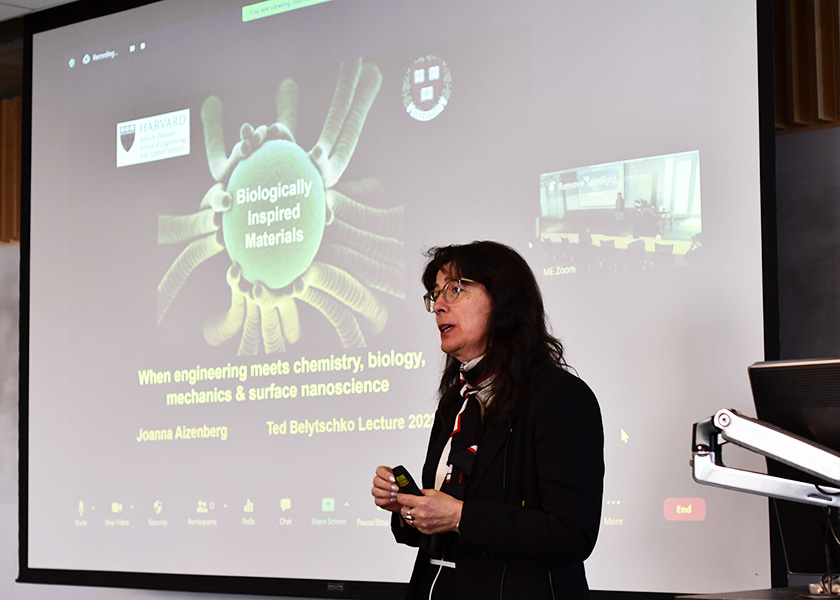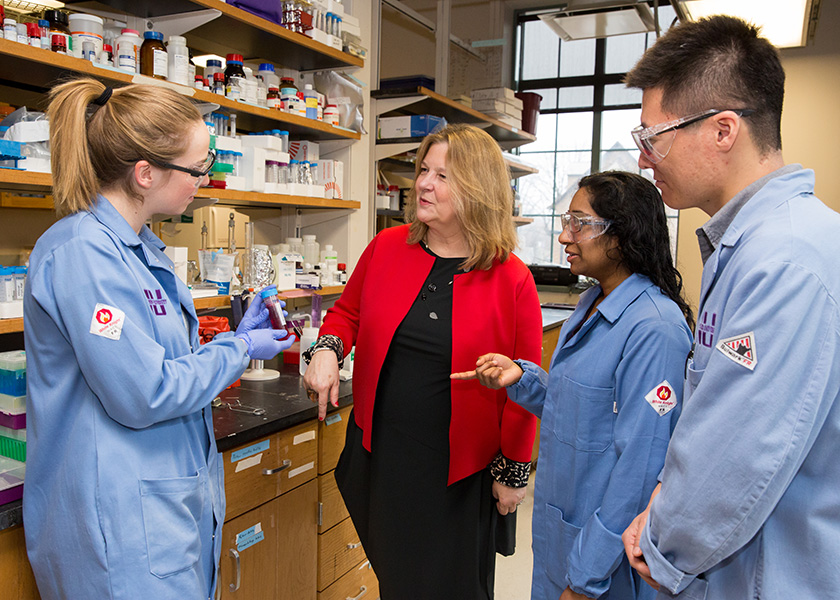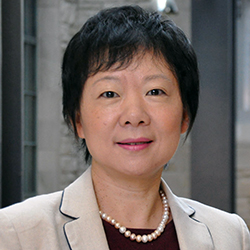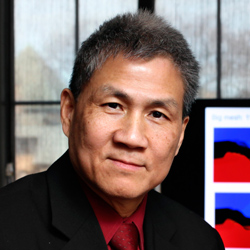Belytschko Lecture Explores Mechanics of Responsive Materials
The lecture honors Ted Belytschko for his contributions to computational structural mechanics
During the 2022 Ted Belytschko Lecture, Harvard professor Joanna Aizenberg spoke about HAIRS. No, not the hair on top of your head, but Hydrogel-Actuated Integrated Responsive Structures.
Delivered March 9 at the Ford Engineering Design Center, Aizenberg’s talk delved into the design of a novel class of reconfigurable materials that use “hairy” surfaces bearing arrays of nanostructures put in motion by environment-responsive gels. Their unique hybrid architecture and chemical and mechanical properties can be optimized to confer a wide range of adaptive behaviors.
Using both experimental and modeling approaches, Aizenberg’s lab is developing these HAIRS as new materials with reversible optical and wetting properties, as a multifunctional platform for controlling cell differentiation and function, and as the first homeostatic system with autonomous self-regulation. The extension of these principles to the synthesis of unique liquid crystal elastomer microstructures capable of a broad range of hierarchical, even mechanically unfavored deformation behaviors, have potential applications in medicine, switchable adhesion, information encryption, autonomous antennae, energy harvesting, soft robotics, smart buildings, and more.

“A range of different things is possible,” Aizenberg said. “Some of these principles laid the foundation for our work on a number of applications, such as examining the quality of oil, classifying it for the purposes of transport, and analyzing what kind of oil is being drilled from oil wells.”
Aizenberg, the Amy Smith Berylson Professor of Materials Science and professor of chemistry and chemical biology at Harvard, has earned many honors that include election to the National Academy of Sciences, National Academy of Engineering, American Academy of Arts and Sciences, and American Philosophical Society.
Her lab's research is aimed at understanding some of the basic principles of biological architecture and the economy with which nature solves complex problems in the design of multifunctional, adaptive materials. These biological principles are then used as guidance in developing new, bio-inspired synthetic routes and nanofabrication strategies that lead to advanced materials and devices, with broad implications.

“This is an approach which we apply, for example, in designing slippery surfaces by using liquids as a slippery, repelling overlayer” Aizenberg said. “We are using them for a whole range of applications.”

The collapsing but controlled HAIRS can pick up particles as they assemble. This trapping method operates via mechanical interlocking, creating an adhesive that is harder to release.
Also, the dynamic HAIRS that either lay down or stand up can allow clothes to either repel or attract water, creating a fabric that responds to humidity.
“It’s a self-controlled surface that regulates hydrophobic or hydrophilic behavior,” Aizenberg said.
The lecture was established in 2013 to honor Belytschko for his contributions to the field of computational structural mechanics and his impact on Northwestern Engineering’s Department of Mechanical Engineering and Department of Civil and Environmental Engineering.
Belytschko, who joined Northwestern’s faculty in 1977, passed away in 2014.

“Ted was one of the most prolific and influential scholars in the field of computational mechanics, and in many ways he helped to define the field,” said Kimberly Gray, Roxelyn and Richard Pepper Family Chair in Civil and Environmental Engineering, who delivered the opening remarks.
Aizenberg was introduced by Wing K. Liu, Walter P. Murphy Professor of Mechanical Engineering and Civil and Environmental Engineering at Northwestern Engineering. Belytschko and Liu were long-time collaborators, and in 1980, Liu joined the McCormick School of Engineering to work with Belytschko after studying under him as an undergraduate student at the University of Illinois at Chicago.
The event was hosted by the mechanical engineering and civil and environmental engineering departments.
Following her remarks, Aizenberg was presented a plaque by Gray and Wei Chen, Chair and Professor of Mechanical Engineering and Wilson-Cook Professor in Engineering Design.